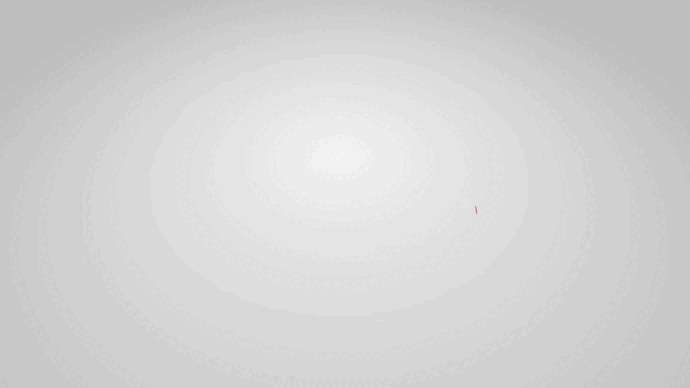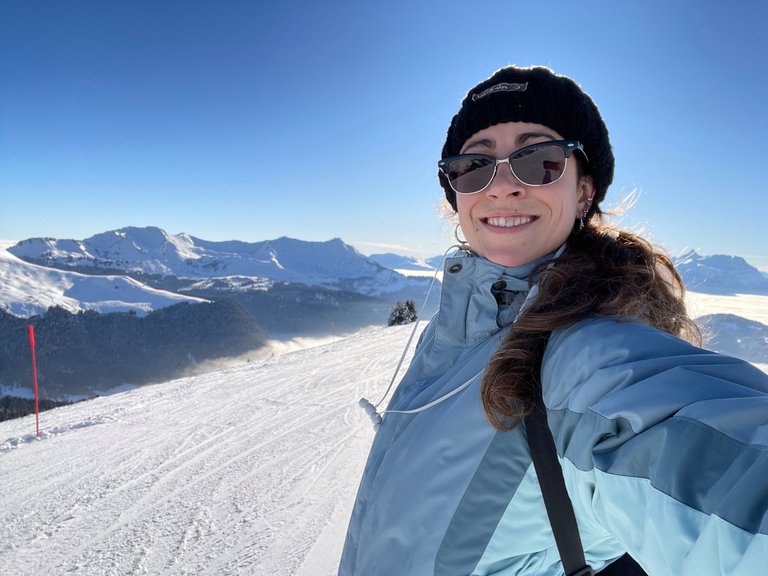
Español
Ven a deslumbrarte con este Trekking hacia Marmotte 25 - Epervier 15, Les Gets, Francia: video + serie de 50 fotos
Hola queridos amigos de Full Deportes en la familia de Hive, espero que estén pasando un día hermoso, hoy nos vamos de trekking otra vez. Trekking o hiking, que es básicamente lo mismo.
Les dejo por aquí un video que sé que les va a encantar, pues resume muy bien mi caminata.
Además, dejo 50 fotos para que puedan disfrutar de este sendero impresionante y prácticamente improvisado que inicié un día de semana, en medio de mis dos turnos.
He agregado en este post, además, algunas reflexiones referidas al movimiento del cuerpo que he alcanzado en estos últimos días.
Algunas de ellas son bien sabidas por aquí por Full Deportes, pero creo que siempre es bueno recordarlas, pues muchas veces incluso yo misma me olvido de esto.
English
Come and dazzle yourself with this Trekking to Marmotte 25 - Epervier 15, Les Gets, France: video + series of 50 photos
Hello dear friends of Full Deportes in the Hive family, I hope you are having a beautiful day, today we are going trekking again. Trekking or hiking, which is basically the same thing.
I leave here a video that I know you will love, because it sums up my hike very well.
Also, I leave 50 photos so you can enjoy this impressive and practically improvised trail that I started on a weekday, in the middle of my two shifts.
I have also added in this post some reflections on the movement of the body that I have achieved in recent days.
Some of them are well known around here by Full Deportes, but I think it is always good to remember them, because many times even I myself forget about this.
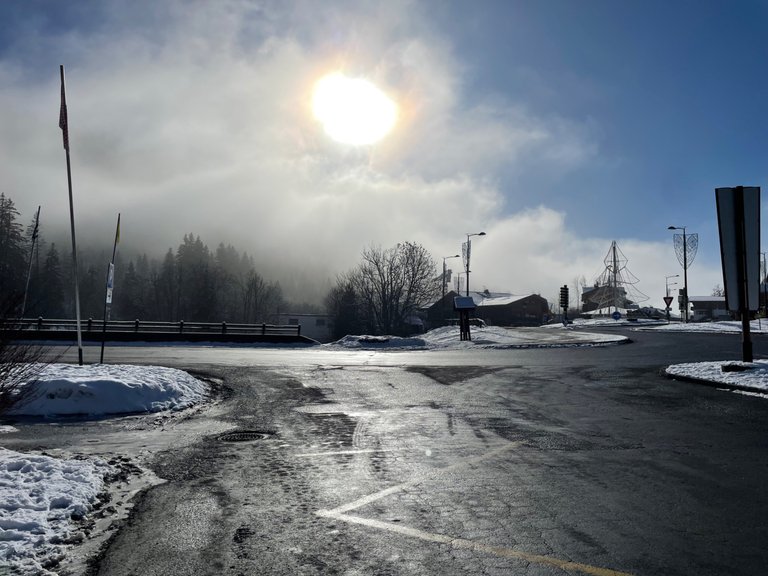
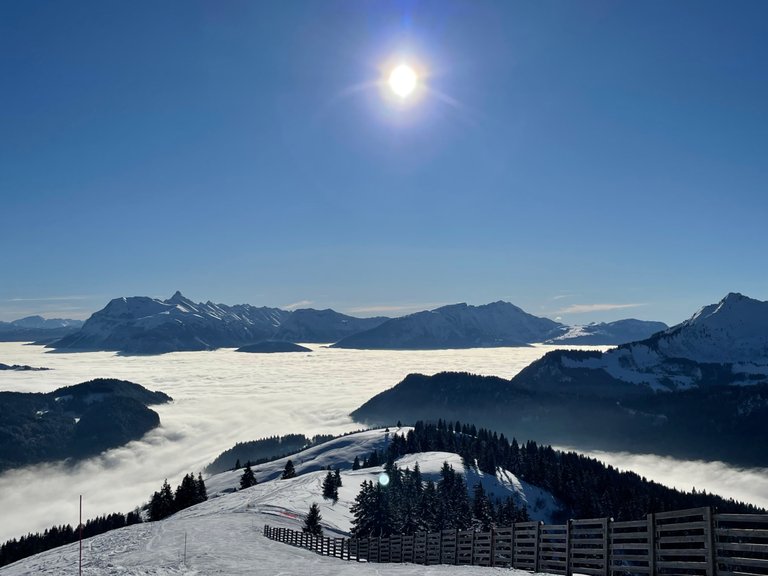
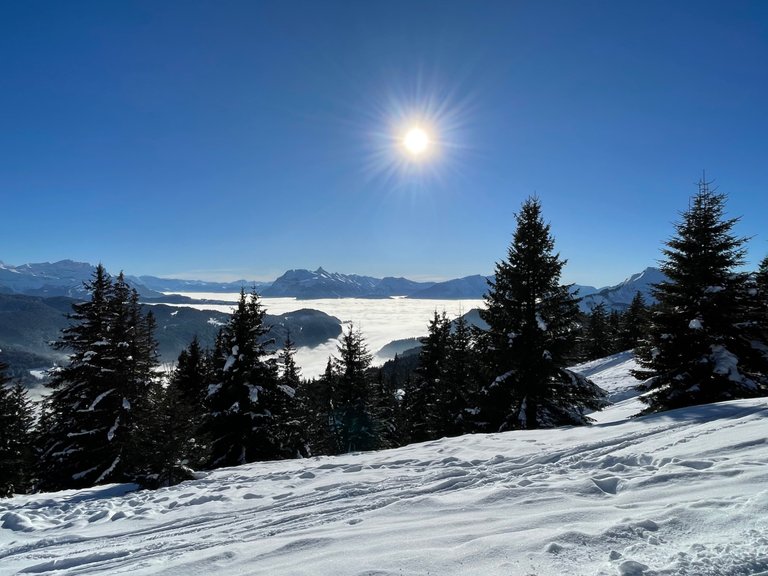
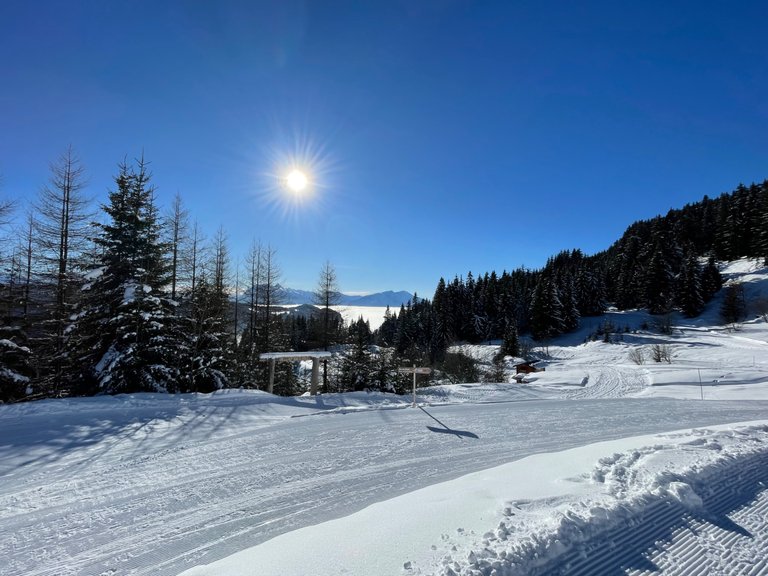
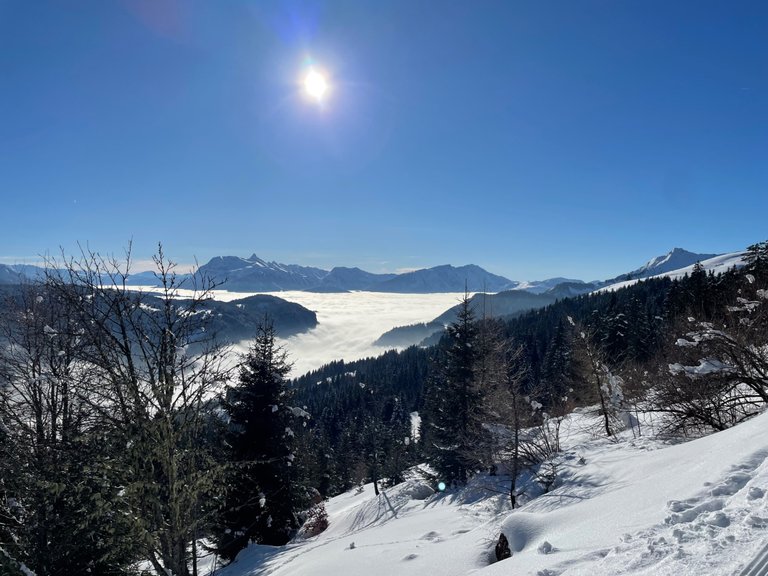
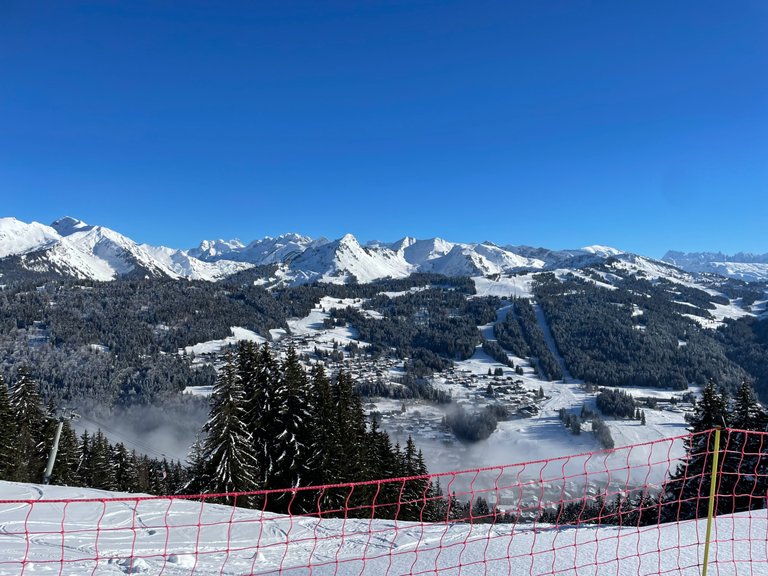
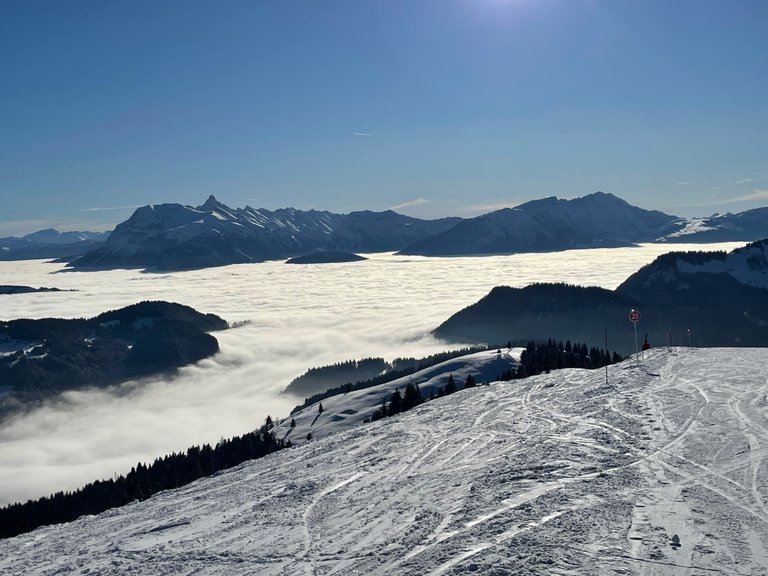
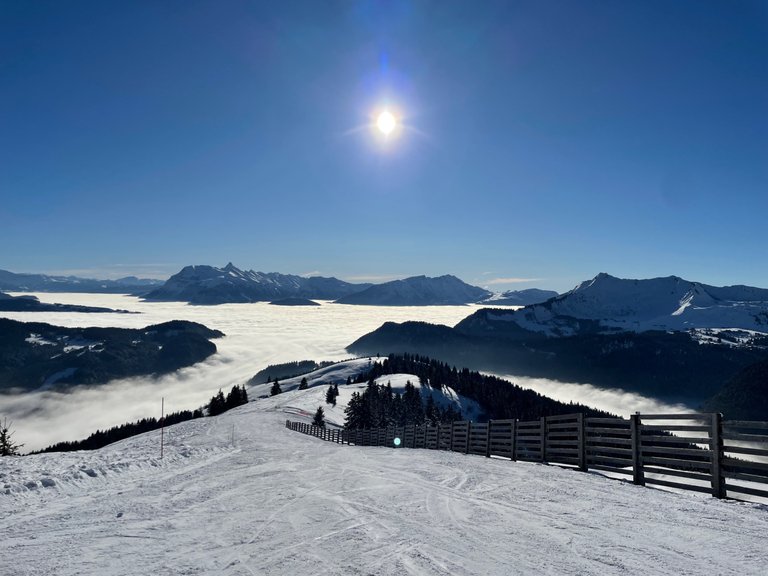
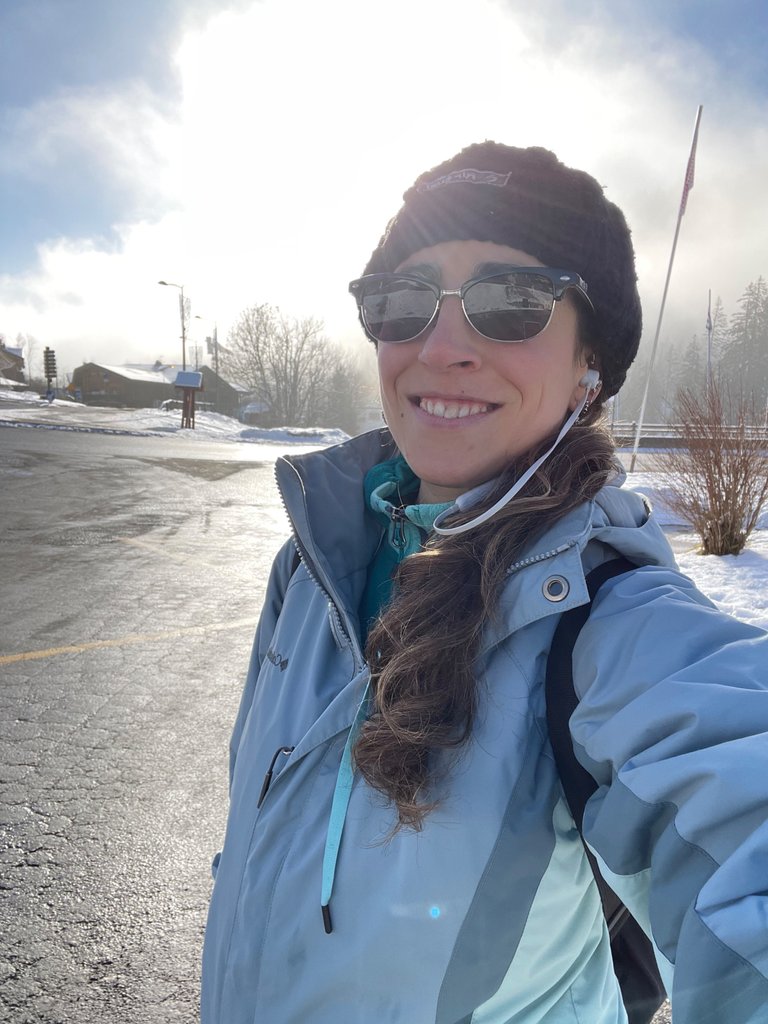
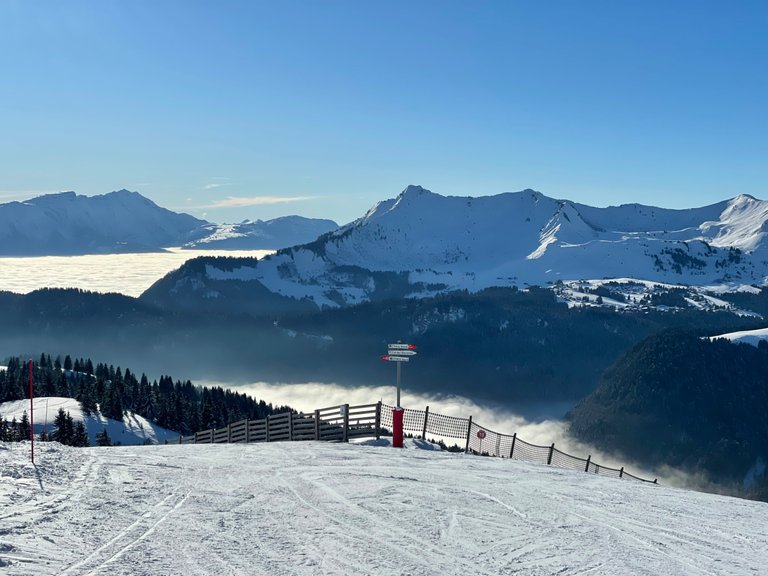
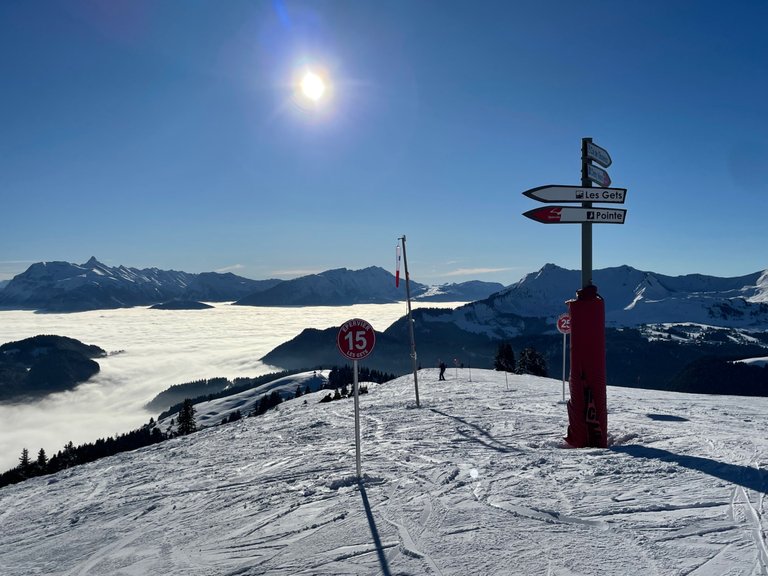
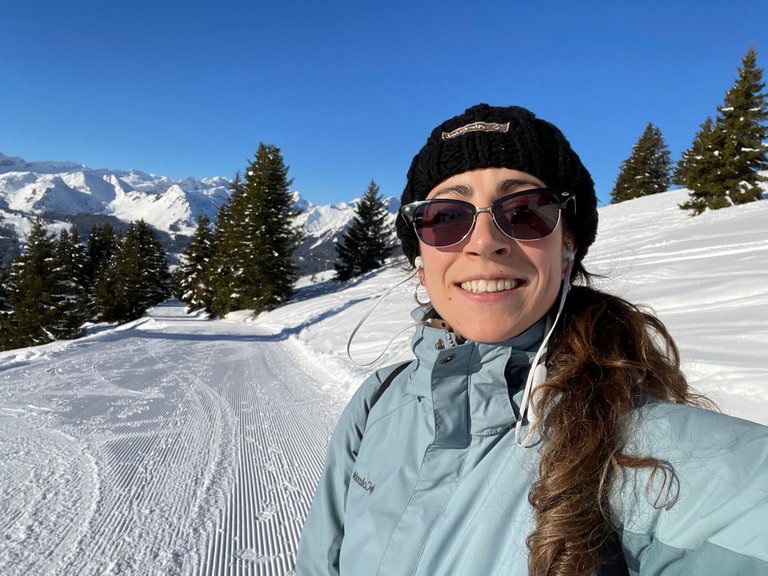
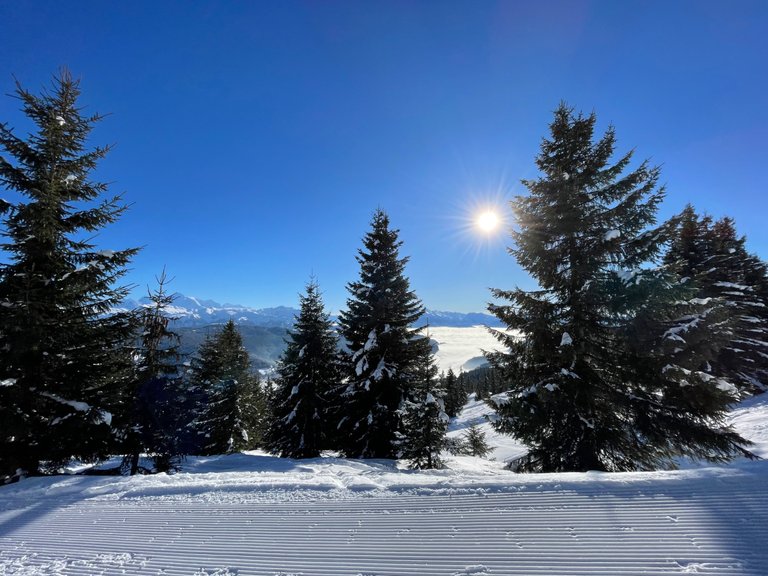
¿Cuál es la importancia de “moverse”?
A veces tenemos tantas cosas que hacer en nuestro cotidiano, que lo último que hacemos es agregar a la agenda esa hora para hacer actividad física. Sencillamente creemos que es lo menos importante. Pues por ejemplo ser una persona hiperproductiva y generar ingresos o avanzar en proyectos, pareciera ser el centro de la vida.
Y en verdad, ¿cuál es el eje alrededor del cual el ser humano se mueve? O mejor dicho, ¿qué es eso que buscamos alcanzar? Es la felicidad. Cuando avanzamos en logros materiales, a menudo nos damos cuenta que no estamos logrando “eso”, e incluso perdemos el foco de “eso” que queremos lograr.
A veces, en el proceso perdemos el equilibrio de nuestra salud y entonces comprendemos que no importa qué alcancemos, sino cuán saludables estemos para ir a por ello.
El movimiento aquí, es un factor clave, pues sin movimiento, no hay salud. Es más, sin movimiento no hay vida.
¿Qué pasa con el agua estancada? Se pudre. Nuestro cuerpo está compuesto principalmente por líquidos, y si lo dejamos quieto, el cuerpo empieza a perder su vitalidad y su energía.
Moverse es clave, y para moverse no se necesita dinero, sino solamente la voluntad de implementar una actividad, que puede ser salir a caminar como muestro en este video.
Todas las ciudades y pueblos ofrecen recovecos más o menos naturales para descubrir. Por todos lados hay algún sendero, y si no hay un sendero, pues…¡crea uno a medida que camines!
What is the importance of "moving"?
Sometimes we have so many things to do in our daily lives that the last thing we do is add that hour for physical activity to the agenda. We simply believe that it is the least important thing to do. For example, being a hyper-productive person and generating income or advancing in projects seems to be the center of life.
And in truth, what is the axis around which the human being moves? Or rather, what is it that we seek to achieve? It is happiness. When we move forward in material achievements, we often realize that we are not achieving "it", and we even lose the focus of "it" that we want to achieve.
Sometimes, in the process we lose the balance of our health and then we understand that it doesn't matter what we achieve, but how healthy we are to go for it.
Movement** here is a key factor, for without movement, there is no health. In fact, without movement, there is no life.
What happens to stagnant water? It rots. Our body is composed mainly of liquids, and if we leave it still, the body begins to lose its vitality and energy.
Moving is key, and to move you don't need money, but only the will to implement an activity, which can be going for a walk as I show in this video.
All cities and towns offer more or less natural nooks and crannies to discover. Everywhere there is a trail, and if there is no trail, well...*create one as you walk!
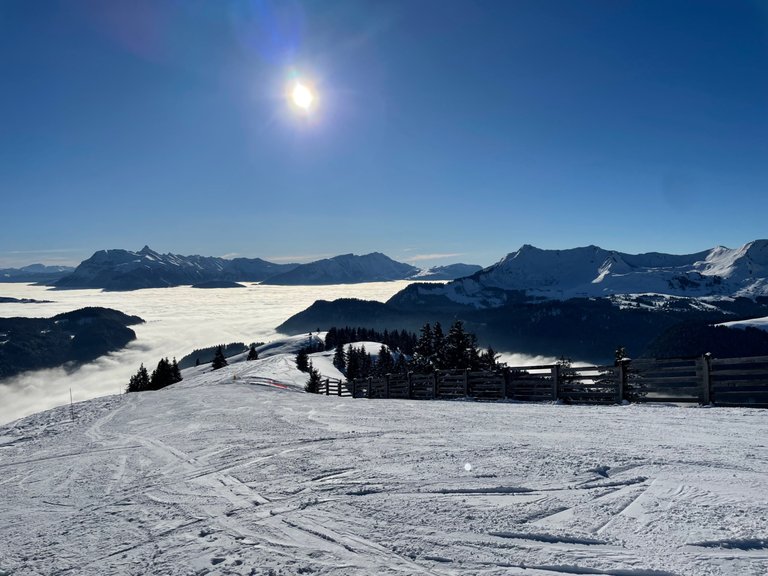
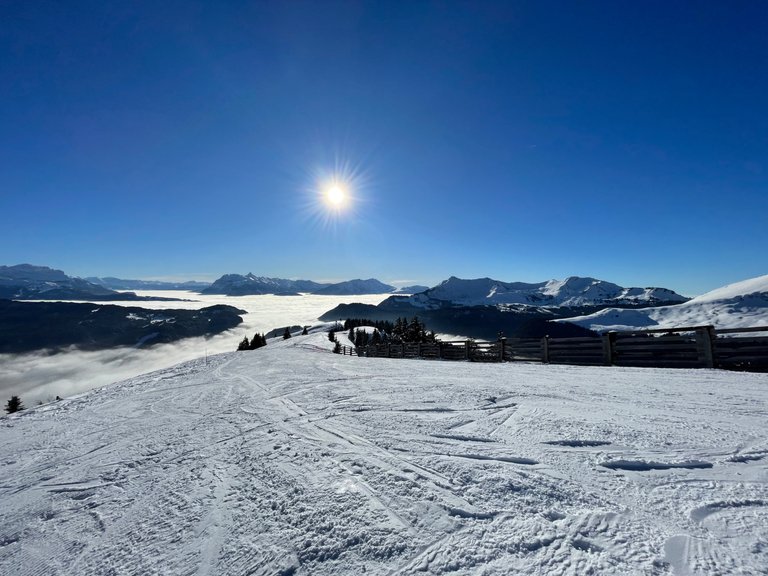
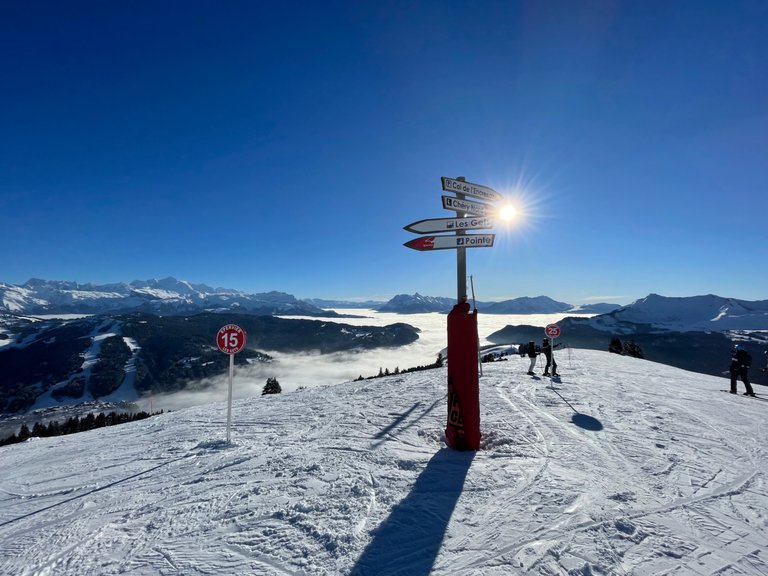
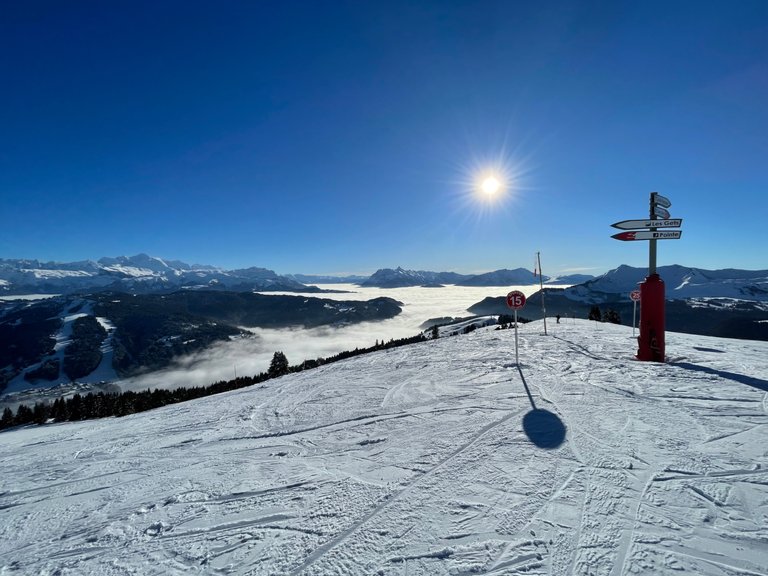

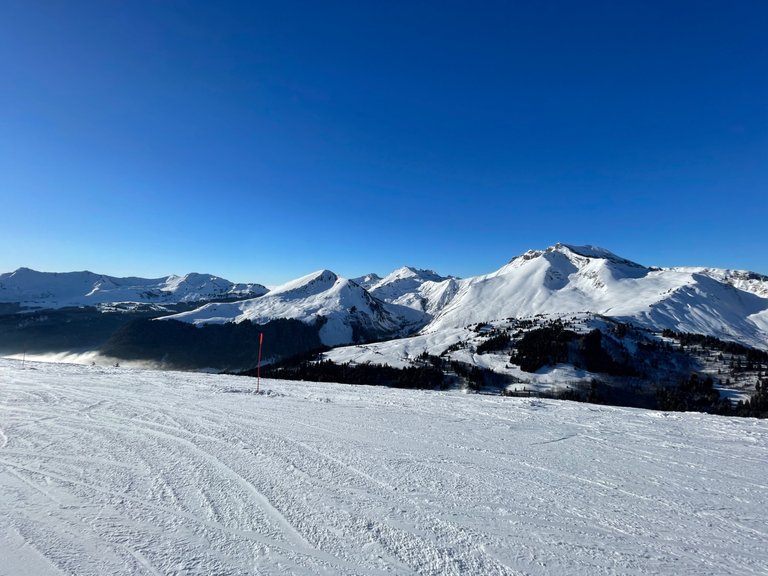
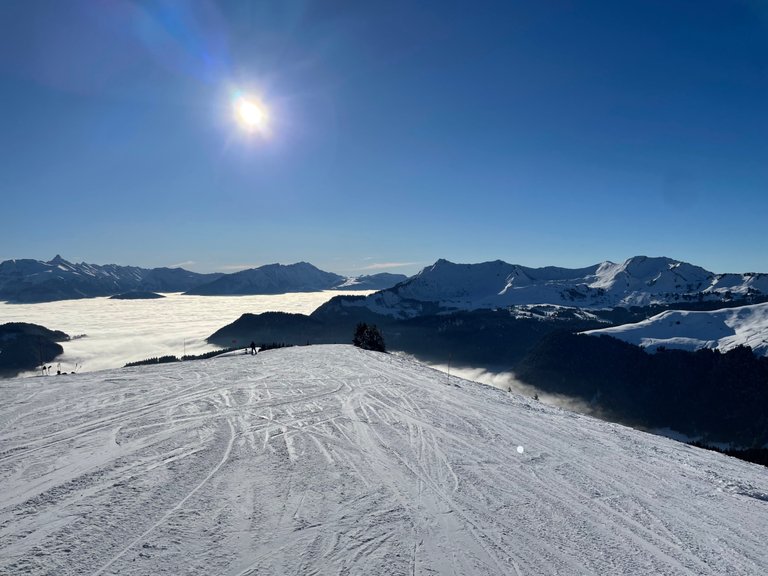
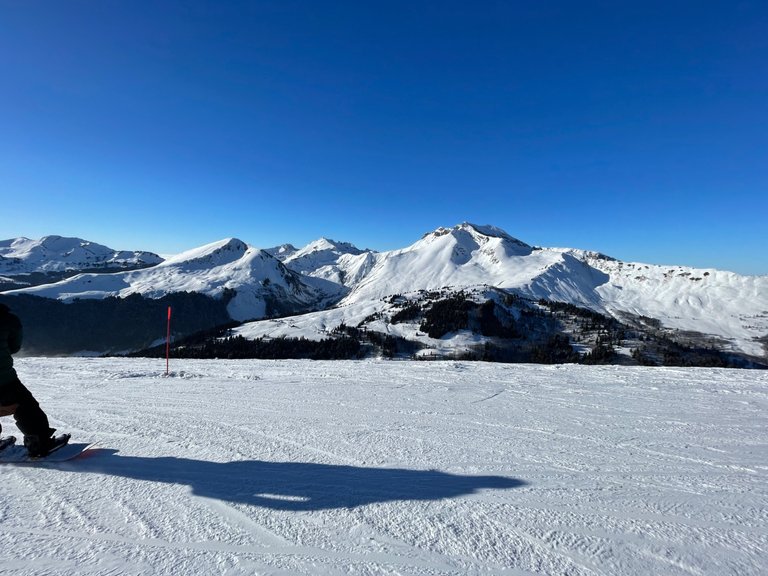
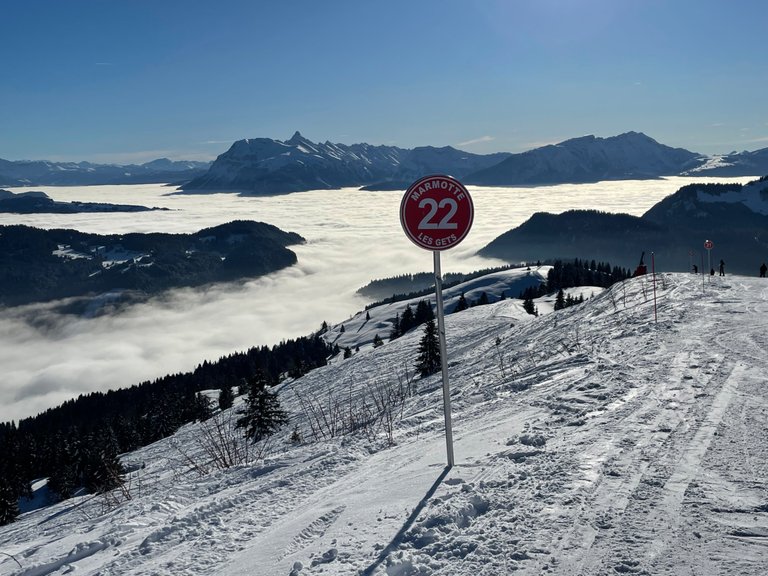
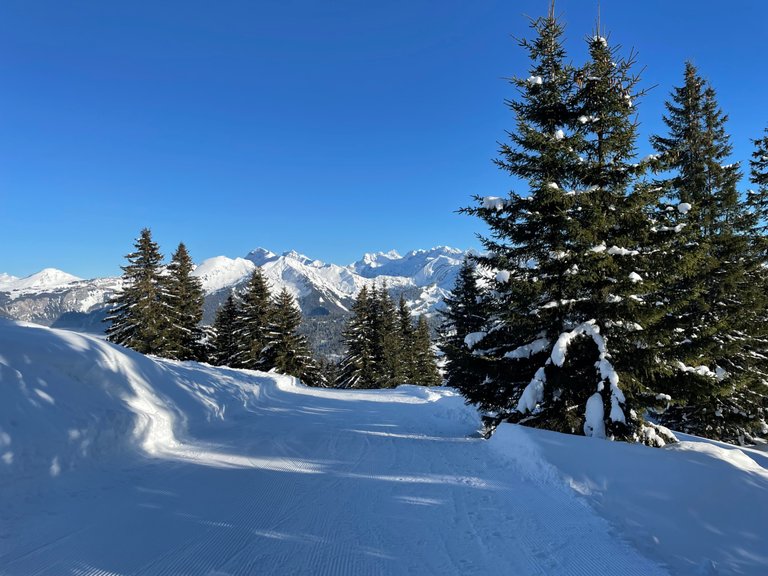
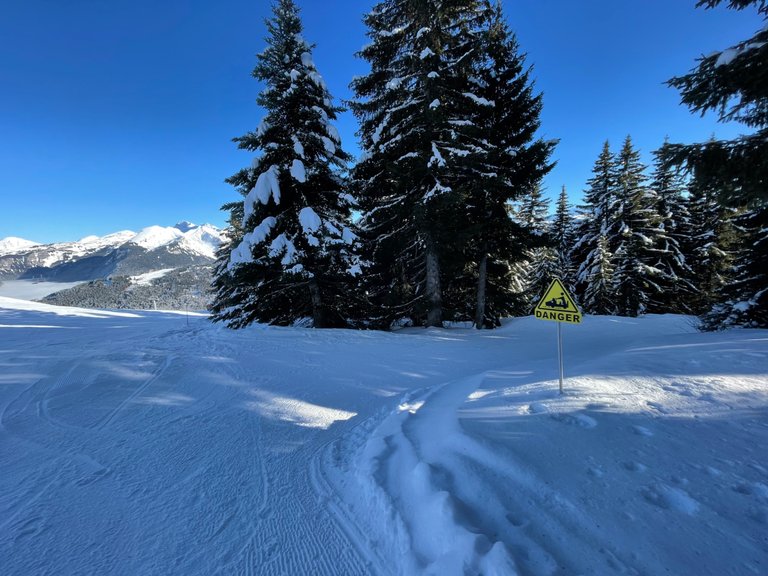
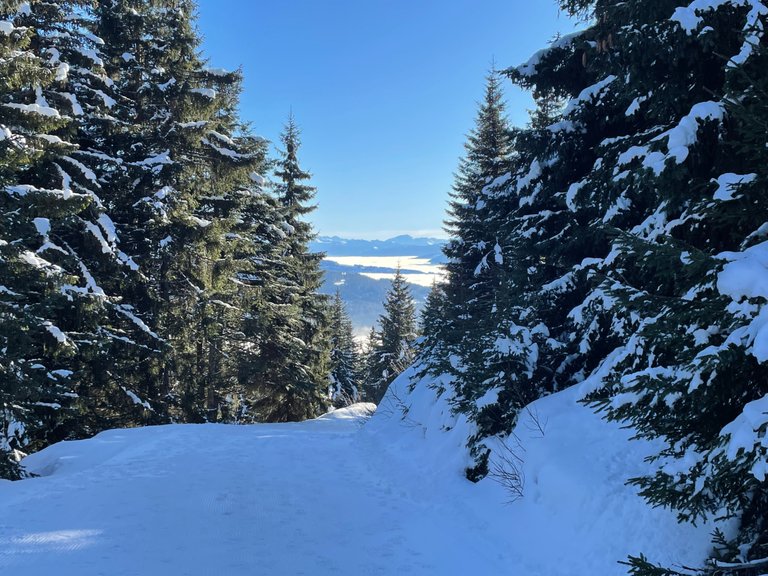
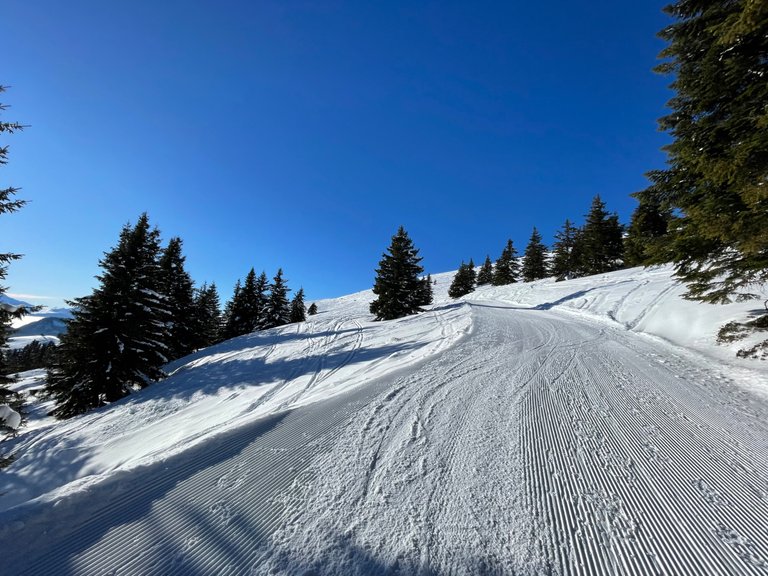

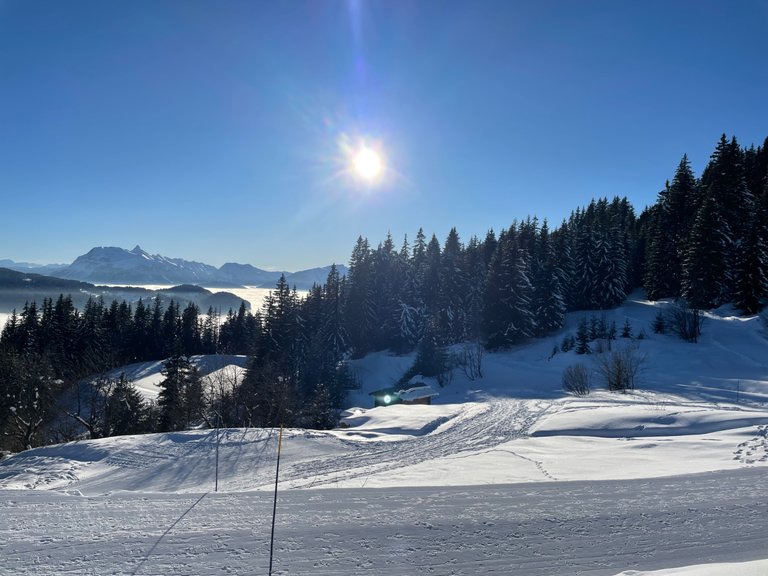

El equilibrio entre los diferentes tipos de movimiento
No es bueno hacer solamente un tipo de movimiento.
A veces hay empleos que demandan bastante movimiento, y entonces creemos que ese movimiento es suficiente para mantener a nuestro cuerpo en equilibrio.
De esa manera, podemos vernos tentados a decir: “hoy trabajé 4 horas, es suficiente movimiento”. Pero aquí hay algunos factores a observar:
El objetivo de ese movimiento no es tu salud, sino tu salario
No has puesto en acción tu voluntad de moverte para tu cuerpo, sino tu voluntad para ir a trabajar, a veces absolutamente automatizada
Los movimientos que realizas en tu trabajo son repetitivos y solo consisten en ciertos movimientos que no buscan equilibrar los músculos utilizados, ni el equilibrio, ni la fuerza
Por este motivo es fundamental que busques una actividad fuera del horario laboral para dedicar a tu salud.
Al mismo tiempo, si solamente realizas caminatas, debes procurar siempre estirar tus músculos tanto de las piernas como de los brazos y espalda, pues el cuerpo empieza a adoptar cierta postura de acuerdo con la actividad que realizas.
He notado esto en este último mes, en donde trabajo y me muevo mucho, pero al final coloco a mi cuerpo siempre en la misma posición.
Me di cuenta al hacer Yoga, de cuáles eran los músculos que estaba activando y cuáles atrofiando debido a los mismos movimientos repetitivos en el trabajo.
Lo mismo con mis largas caminatas en la montaña, en donde desplazarse en la nieve incluye un desafío extra. Hay músculos en mis piernas que están sumamente activos y otros que o bien no trabajan demasiado, o bien están sobrecargados.
Siempre es necesario escuchar al cuerpo y llevarlo nuevamente a su equilibrio con contraposturas que balanceen las fuerzas utilizadas.
The balance between different types of movement
It is not good to do only one type of movement.
Sometimes there are jobs that demand a lot of movement, and then we think that this movement is enough to keep our body in balance.
Thus, we may be tempted to say: "I worked 4 hours today, that's enough movement". But here are some factors to watch out for:
The goal of that movement is not your health, but your salary.
You have not put into action your will to move for your body, but your will to go to work, sometimes absolutely automated.
The movements you perform at work are repetitive and only consist of certain movements that do not seek to balance the muscles used, nor the balance, nor the strength.
For this reason it is essential that you look for an activity outside working hours to dedicate to your health.
At the same time, if you only take walks, you should always try to stretch your leg, arm and back muscles, since the body begins to adopt a certain posture according to the activity you do.
I have noticed this in the last month, where I work and move a lot, but in the end I always put my body in the same position.
I realized while doing Yoga, which were the muscles that I was activating and which were atrophying due to the same repetitive movements at work.
The same with my long hikes in the mountains, where moving in the snow includes an extra challenge. There are muscles in my legs that are extremely active and others that are either not working very hard or are overworked.
**It is always necessary to listen to the body and bring it back into balance with counter postures that balance the forces used.
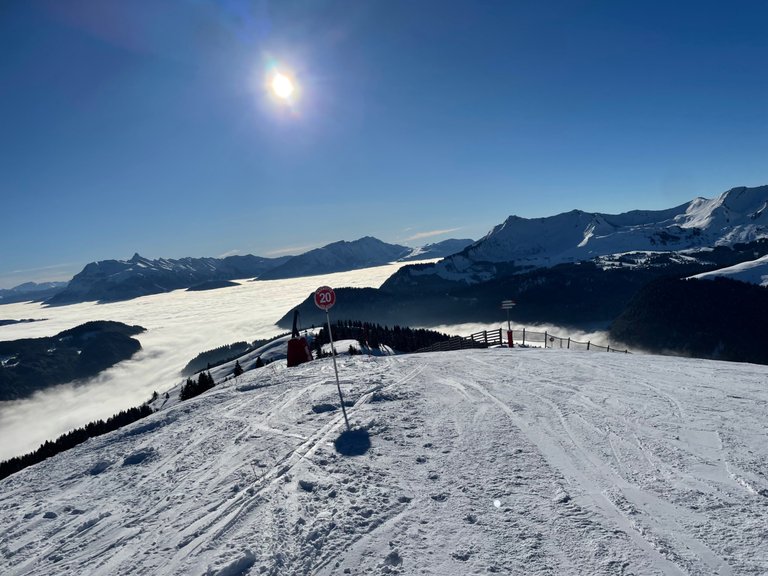
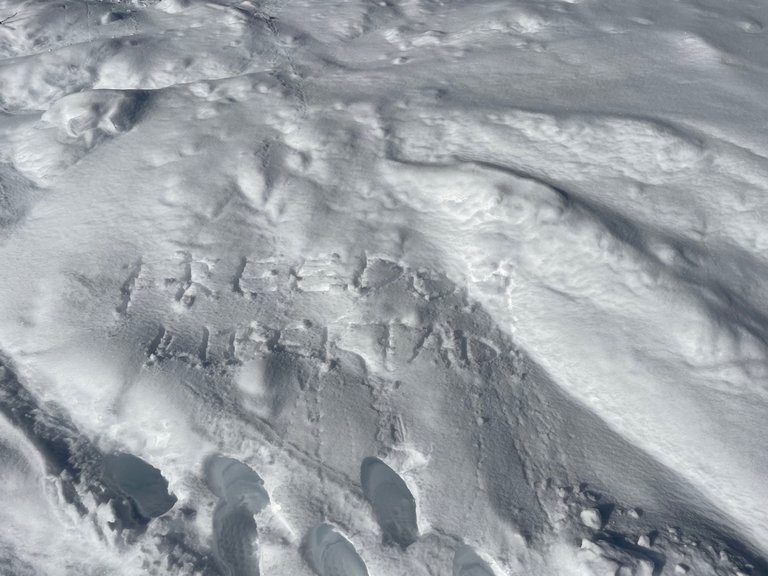
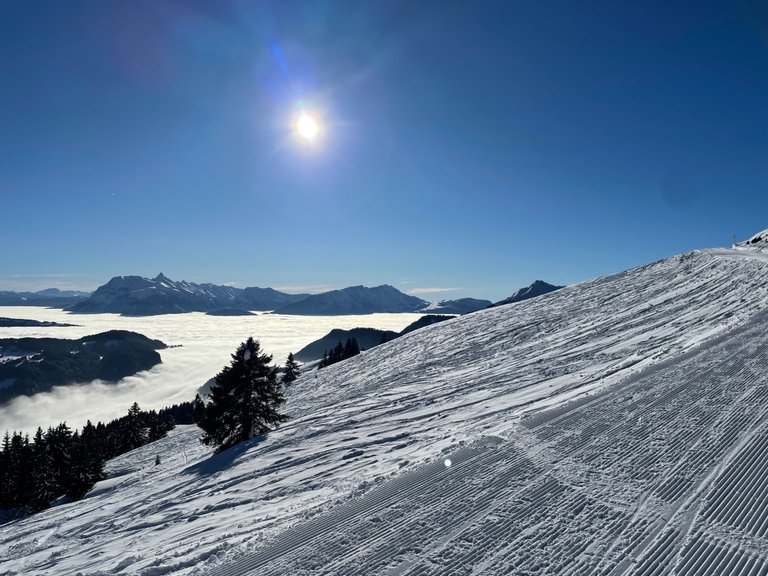
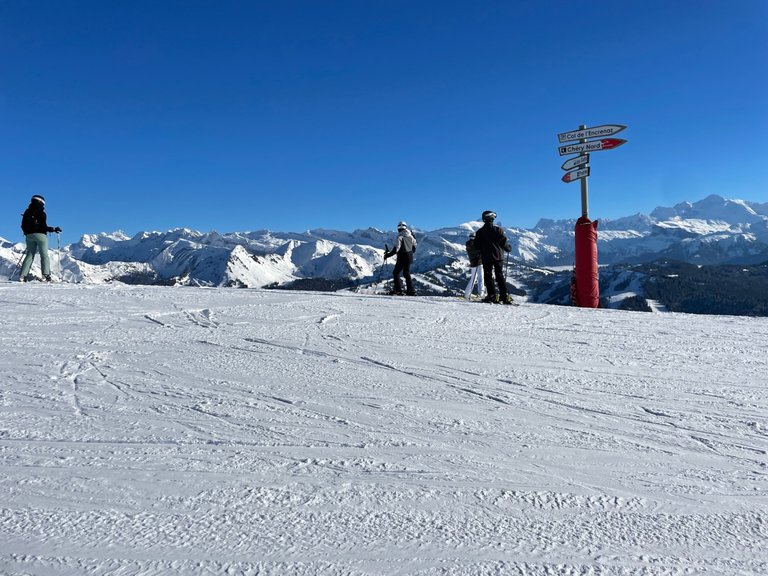
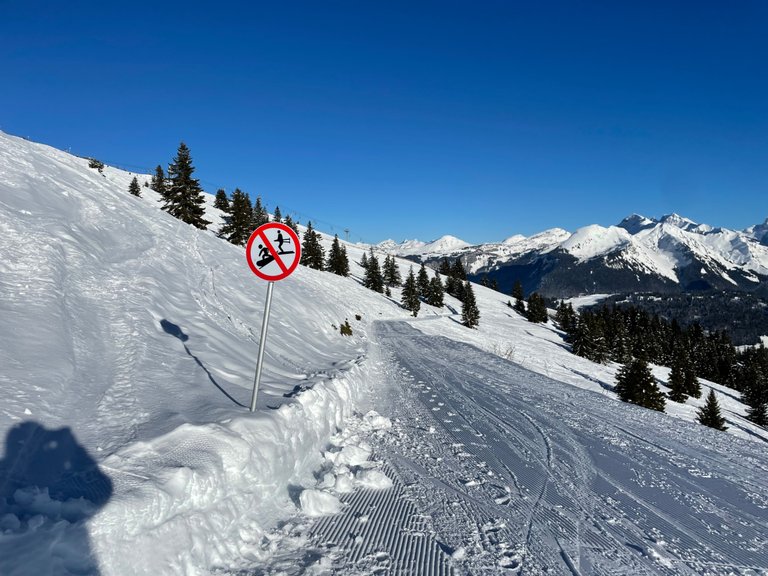
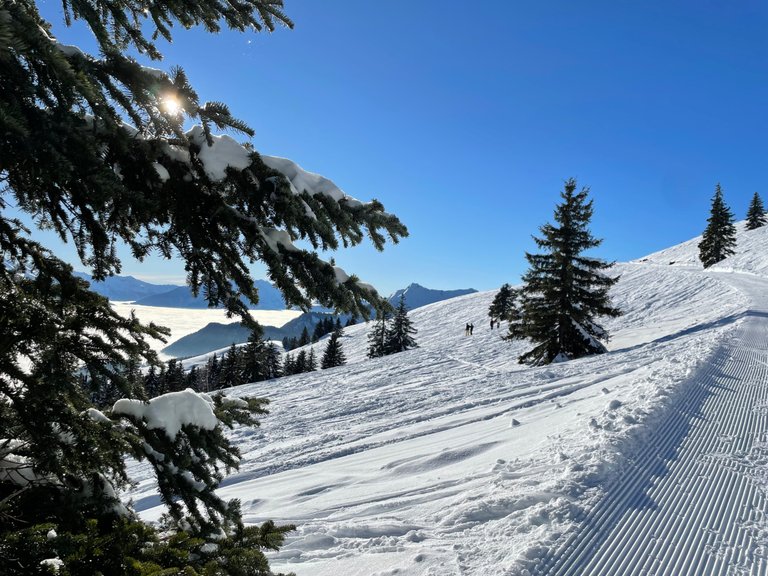
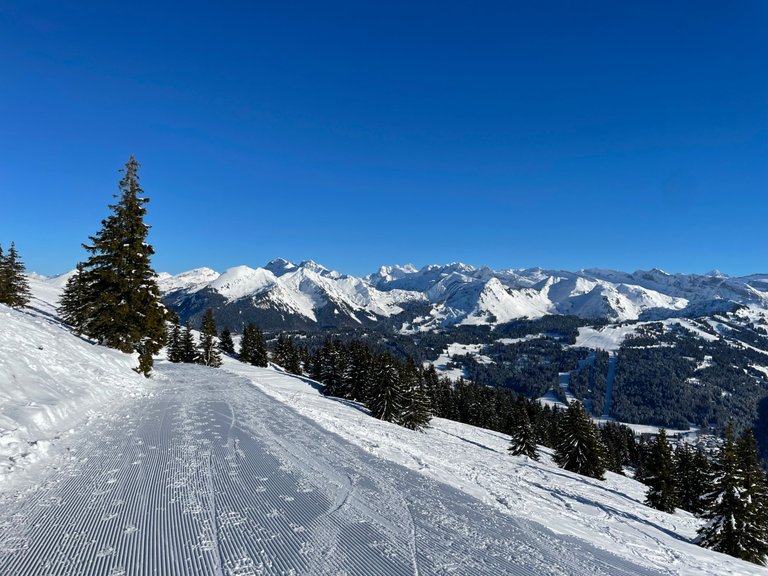
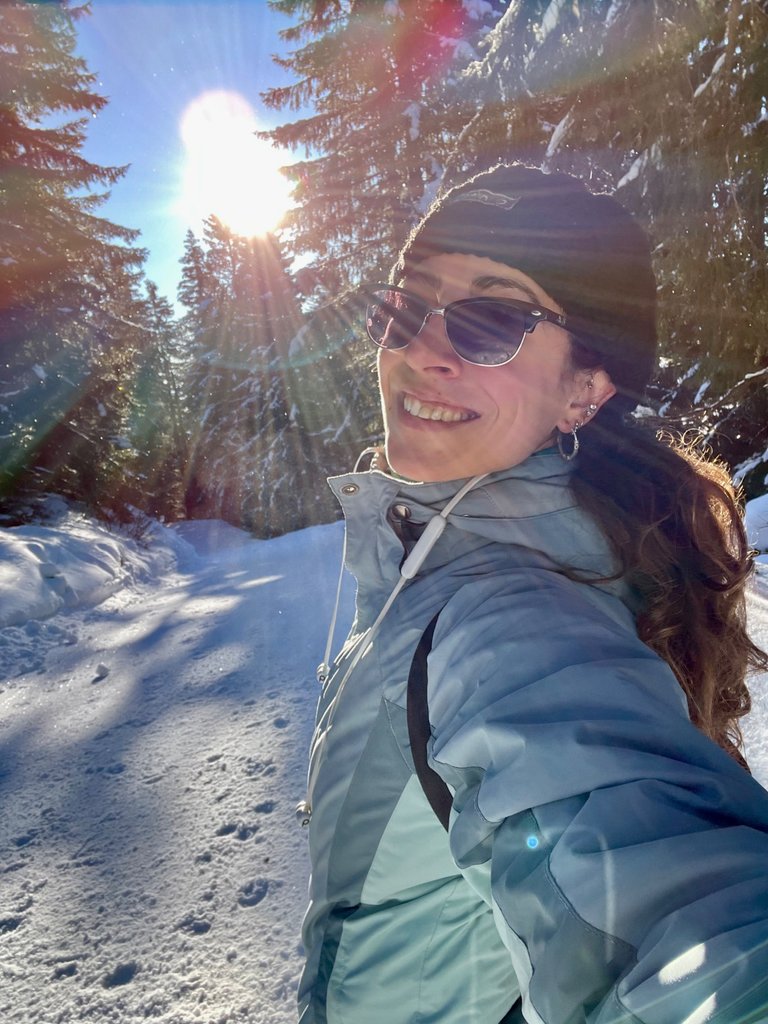
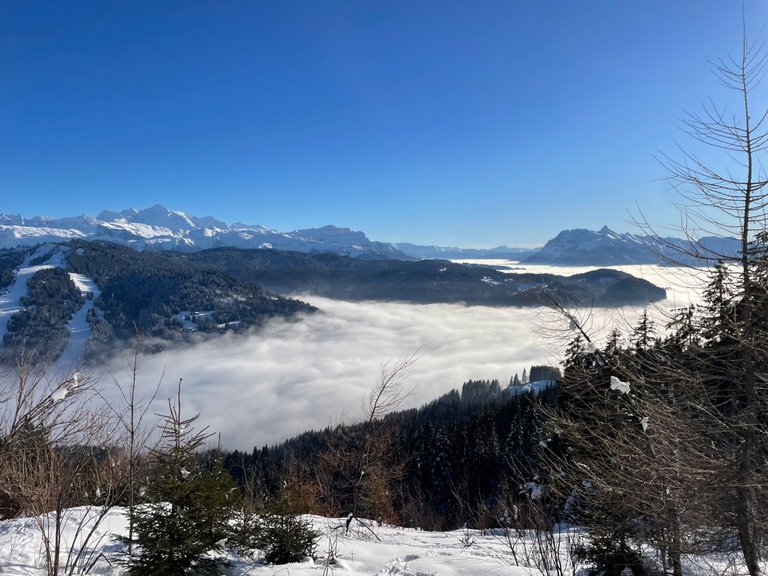
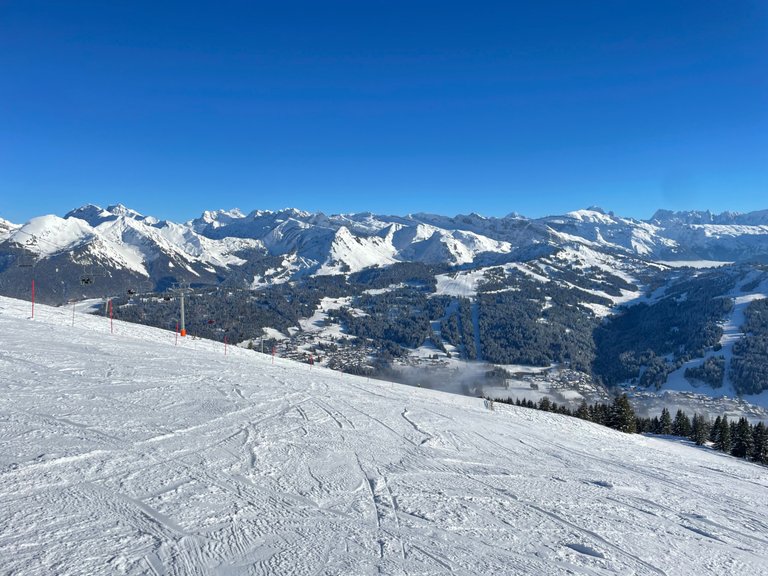
El ritmo en las caminatas
Otro aspecto que noté, es que cuando uno camina paseando, no le exige demasiado al cuerpo, aunque la caminata sea de una hora.
En la experiencia hoy compartida con ustedes, como mi objetivo inicial no era crear contenido sino caminar, sencillamente me enfoqué, casi hasta llegar a la cima, en mi ritmo y en mi velocidad de caminata, y me cansé.
Diría que el doble de lo que me canso cuando voy creando contenido mientras subo.
Aunque la creación de contenido muchas veces será parte de nuestra actividad física aquí en Hive, creo que es bueno proponerse intervalos de 15 minutos de caminata sostenida para luego detenerse un momento a capturar el material.
The rhythm of walking
Another aspect that I noticed, is that when you walk for a walk, you don't demand too much from your body, even if the walk is an hour long.
In the experience I shared with you today, as my initial goal was not to create content but to walk, I simply focused, almost until I reached the top, on my pace and walking speed, and I got tired.
I'd say twice as tired as I get when I'm creating content while climbing.
While content creation will often be part of our physical activity here at Hive, I think it's good to aim for 15-minute intervals of sustained walking and then stop for a moment to capture the material.
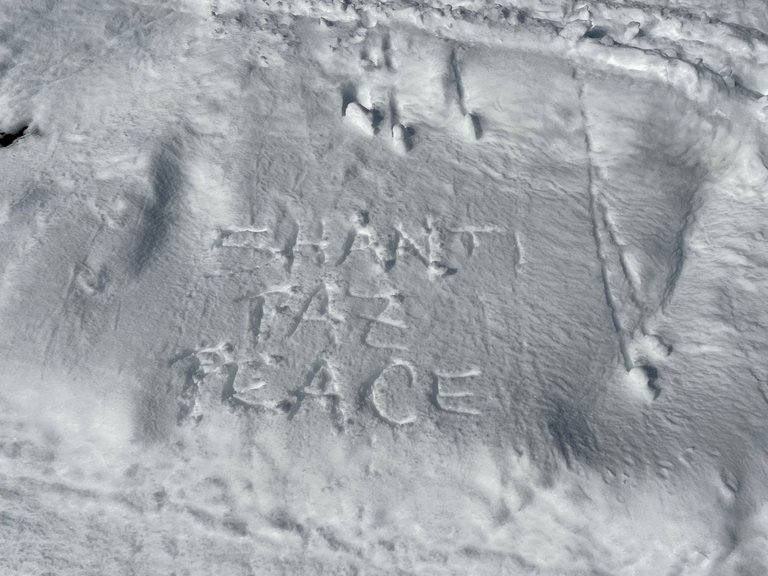
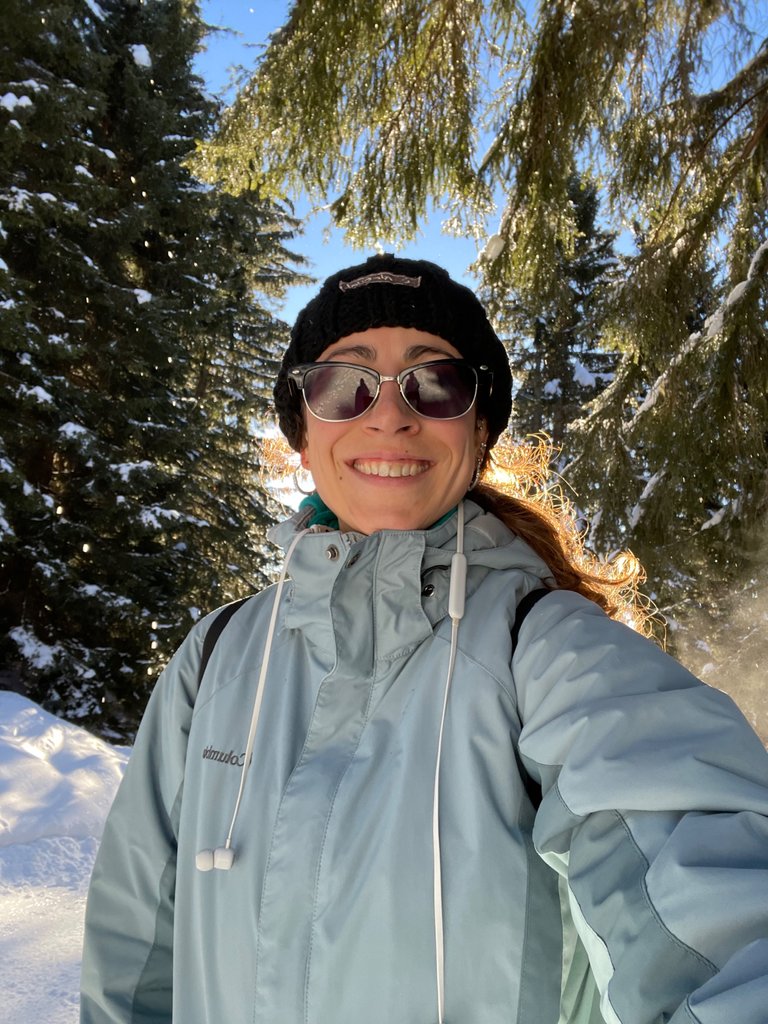
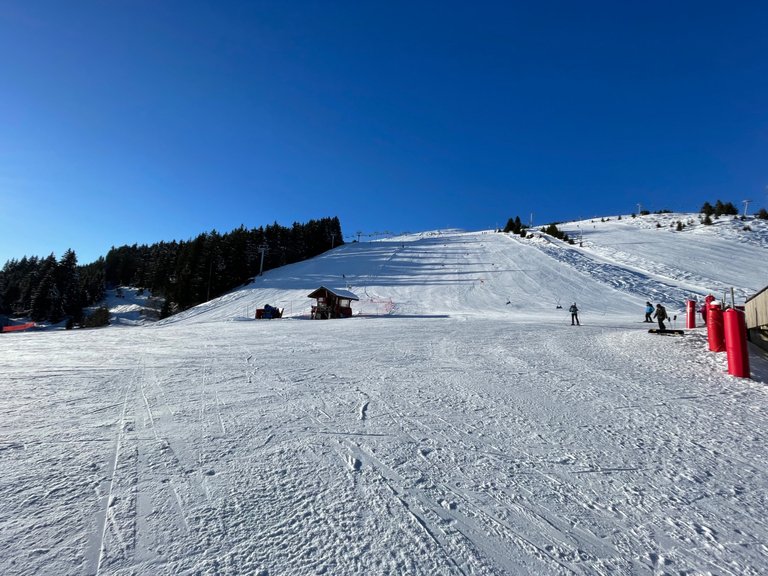
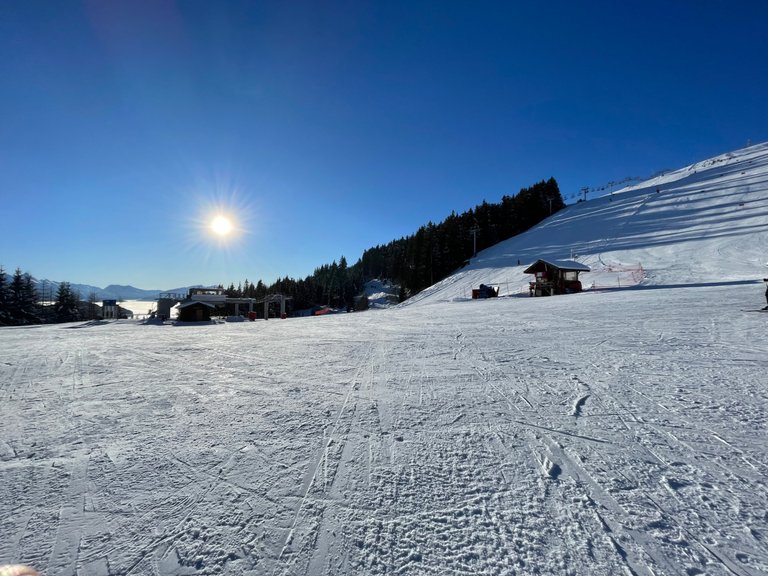
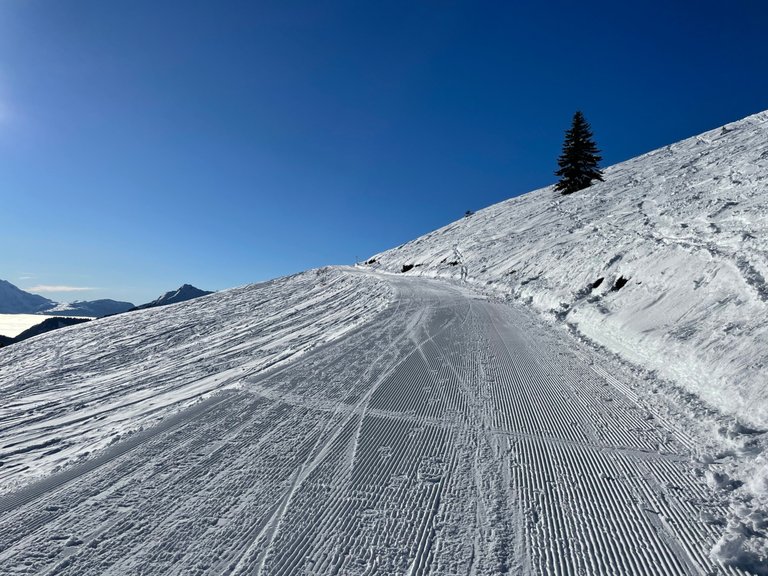
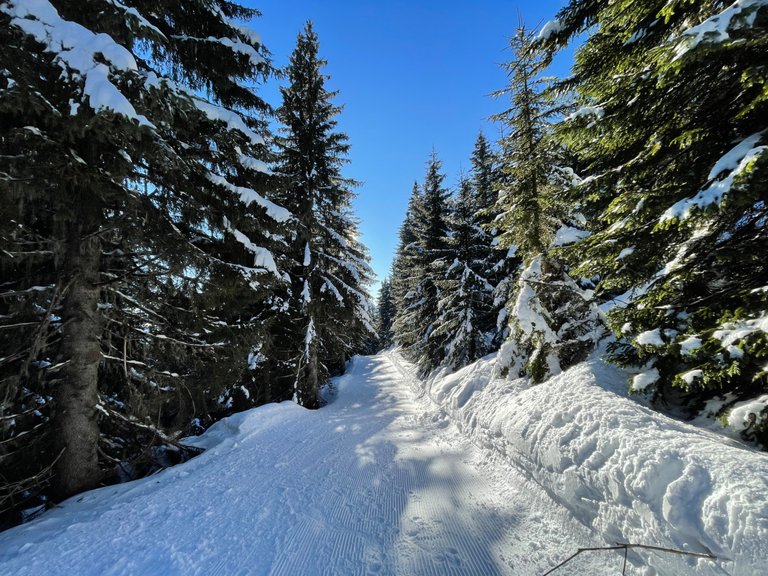
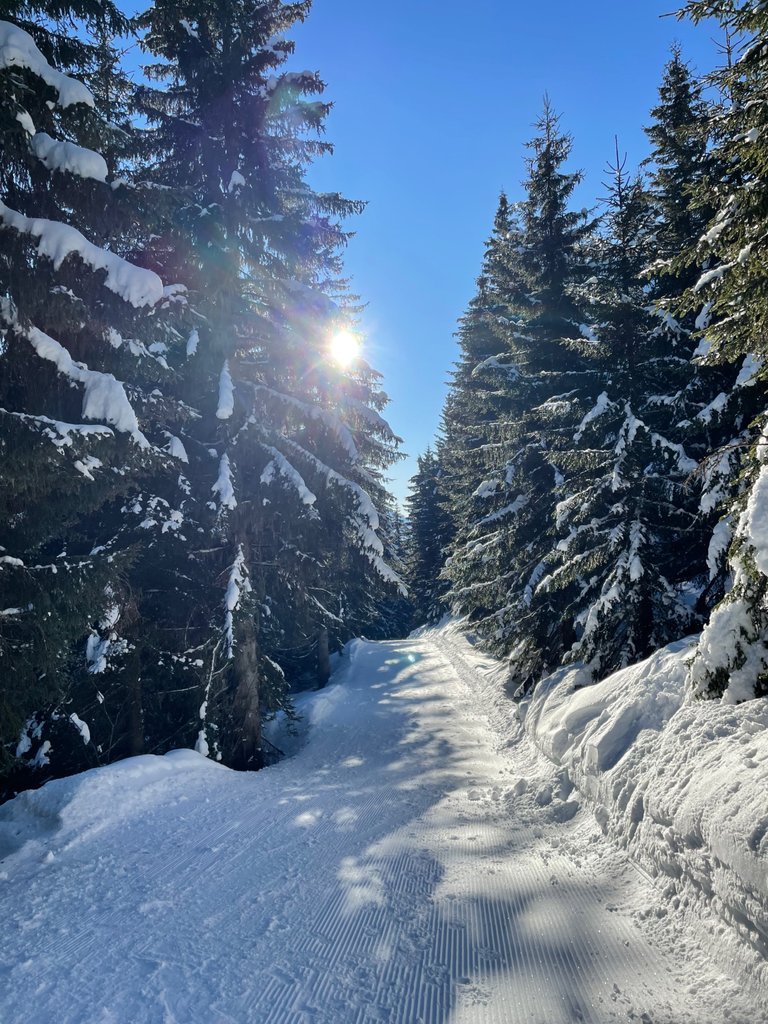
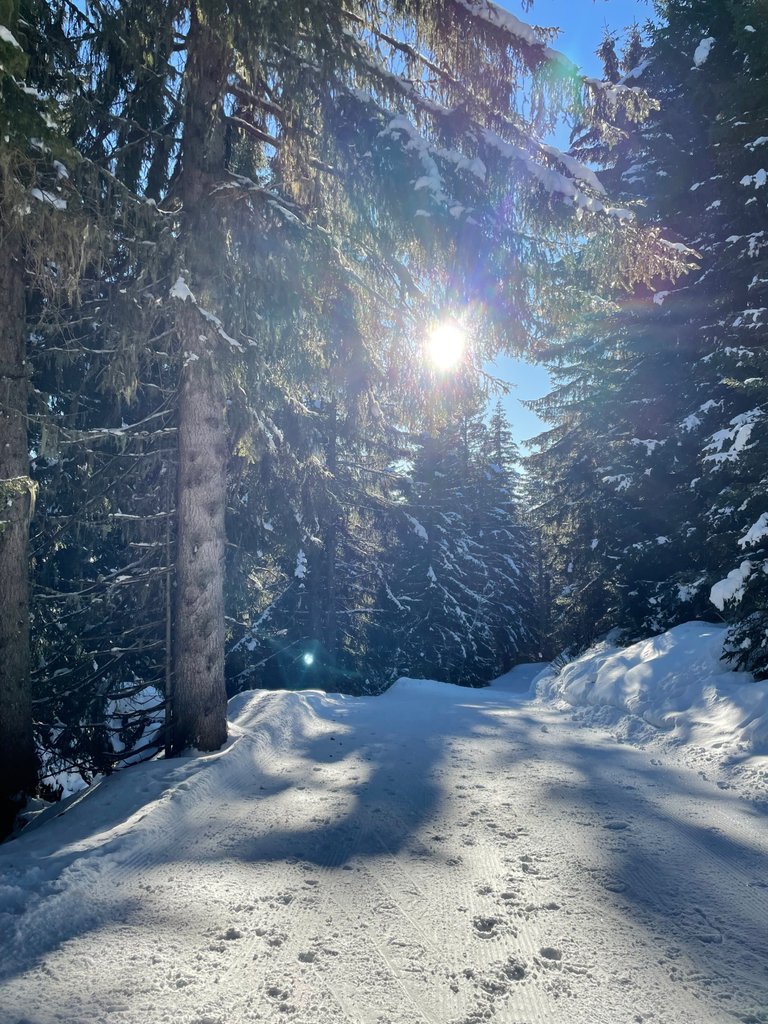
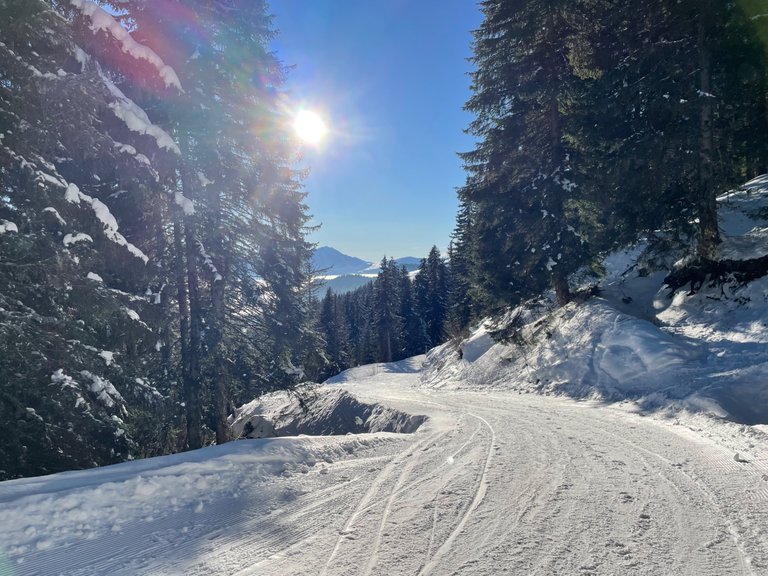
Pinmapple code: [//]:# (!pinmapple 46.16719 lat 6.64521 long Trekking hacia Marmotte 25 - Epervier 15, Les Gets, Francia: video + serie de 50 fotos d3scr)

Datos de edición
Dispositivo: iPhone 12 Pro
Banner: Canva
Aplicación de edición: CapCut
Traducción: DeepL
Subtítulos: CapCut (automáticos en español y manuales en inglés)
Sonidos de transición ofrecidos por CapCut: Deep Woody, computer magic, transformation beautiful appearance, typing (long), swish
Música (Pixabay): Inspiring Cinematic Ambient - Lexin_Music
Link
Edition data
Device: iPhone 12 Pro
Banner: Canva
App for video edition: CapCut
Translation: DeepL
Subtitles: CapCut (automatic in Spanish and manuals in English)
Transition sounds provided by InShot and CapCut: Deep Woody, computer magic, transformation beautiful appearance, typing (long), swish
Music (Pixabay): Inspiring Cinematic Ambient - Lexin_Music
Link


▶️ 3Speak


